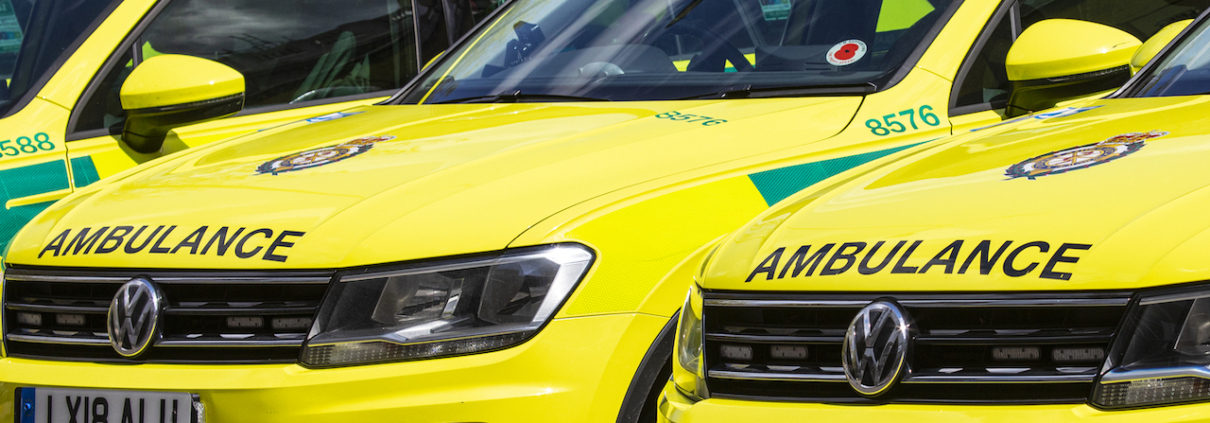Ambulance Cleaning and Decontamination Checklist
Regularly and thoroughly cleaning and decontaminating ambulances is essential for effective infection prevention and control.
Ambulance Cleaning and Decontamination Challenges
But there are several factors that make ambulance cleaning and decontamination challenging. It can be cramped inside an ambulance, and the sheer amount of equipment contained within can make quick cleans particularly difficult. Plus, ambulances also contain numerous delicate medical devices, which alcohol or chlorine-based disinfectants could easily damage.
But the biggest barrier to effective ambulance cleaning and decontamination is the need to keep downtime to a minimum. Ambulances are in high demand, and crews often use them in shifts. This leaves very little spare time for routine cleaning and decontamination.
How to Overcome Cleaning Challenges
So to overcome these challenges, ambulance services need to establish a cleaning procedure that is as fast and straightforward as possible. And at the same time, they must make use of cleaning products that run no risk of damaging or corroding any delicate equipment.
Ambulance Cleaning Checklist – An Example
Working to a checklist will help ambulance crews ensure they’re as thorough as possible in their limited windows for cleaning. A methodical approach will ensure that nothing gets overlooked during the cleaning and decontamination process.
Here’s an example ambulance cleaning checklist that covers all possible bases:
| Item | |
| Door knobs and handles | |
| Door surface | |
| Patient bed | |
| Sitting couch | |
| Steering wheel | |
| Driver’s seat and other driving equipment | |
| Light switches | |
| Patient transfer trolley | |
| Other horizontal surfaces | |
| Windowsills | |
| Walls and corners | |
| Cardiac monitor | |
| Defibrillator | |
| Ventilator | |
| Leads (e.g. ECG) | |
| O2 Flowmeters | |
| ECG Machines | |
| Medicine Trolley | |
| Bed Sheets (Changed) | |
| Almira | |
| Signature: |
Hand Hygiene and PPE
Cleaning the interior of the ambulance is a vital part of infection prevention and control. But between cleaning procedures, ambulance staff can adopt measures to reduce the risk of infection.
Good hand hygiene is just as important in the ambulance as it is in any other healthcare environment. Paramedics should wash their hands at five key points:
- Before they touch a patient.
- After they touch a patient.
- After touching a patient’s immediate surroundings.
- Before undertaking any clean or antiseptic procedures.
- After any body fluid exposure risk.
Paramedics should follow a specific hand washing technique to ensure thorough cleanliness. And they should have access to effective antimicrobial hand sanitiser as close as possible to the point of care.
They should also wear the appropriate personal protection equipment (PPE) for the task at hand.
For more information about good practice for staff, read our full guide to standard infection control precautions.
Choosing the Correct Ambulance Cleaning Products
The choice of cleaning product can make a huge difference in ambulance cleaning turnaround time.
Virusolve®+ Wipes are an effective one-step solution. They clean, sanitise and disinfect surfaces at once, so there’s no need to prepare surfaces beforehand, or treat them afterwards.
They’re odourless, colourless, non-hazardous, non-irritant, non-flammable and non-corrosive, so they’re safe to use on even the most delicate medical equipment. They can be used on any surface, including carpets and upholstery, and as they’re hypo-allergenic there’s no risk of triggering reactions in patients.
Using absorbent mats for certain procedures in the ambulance can also help reduce downtime. Some brands of floor mat can absorb up to 8.5 litres of water or 3.5 litres of saline, whilst non-slip alternatives may still prove useful for smaller spills of fluid up to 2 litres. Then afterwards, you can simply dispose of the mat and apply a fresh one. This means you won’t have to spend so long cleaning spills on surfaces.



